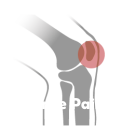Condition
FIRST PHYSIOTHERAPY is comprehensive physical rehabilitation clinic .Our working based on Assessment, Analytical assessment,Diagnosis and Evidence based treatments for orthopedic, sports and neurological conditions

Sleep Disc
A slipped disc is when a soft cushion of tissue between the bones in your spine pushes out. It’s painful if it presses on nerves. It usually gets better slowly with rest, gentle exercise and painkillers.Not all slipped discs cause symptoms. Many people will never know they have slipped a disc.

Stiffness
Muscle stiffness, also known as muscle tension, rigor, or stiffness, is one of the most common causes of muscle pain. It is characterized by the inability of the muscles to relax normally. The condition can affect any of the muscles in the body, causing a sharp pain that makes movement difficult.

Myalgia
Don’t slouch when standing or sitting. While standing, keep your weight balanced on your whole feet neither on heel nor on toes. Sit in a chair slightly tilted forwards (water fall base) with your knees below your hips and your feet under the chair. The height of chair must be equal to length of leg (heel to middle of knee joint).

Headaches
Vertigo is a feeling that the world is spinning around. People with extreme vertigo feel nauseous, often vomit, and talk about lying down and holding onto the carpet to keep from falling off the earth. Many patients complain of dizziness rather than of a true whirling sensation. A whirling sensation is usually associated.

Post Fracture
‘Broken bone/bones’ commonly termed as fracture which can happen after accidents, falls or being struck by something.
In older age, bones become frailer and main cause of fractures is trips and falls. Moreover, osteoporosis in older age can make bones more brittle and more likely to fracture after a fall.It’s important that Rehabilitation programme is adhered too after a fracture to ensure.

KNEE PAIN
As the knee flexes and extends the patella (aka, the knee cap) slides along a groove formed in the distal end of the femer (aka, the thigh bone). If the knee cap rubs too hard, or if it is aligned improperly such that it tracks Asymetrically within this groove, the cartilage on the undersurface of the knee cap can become irritated, leading to pain on the front of the knee.

